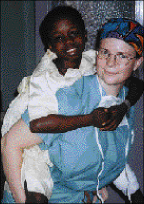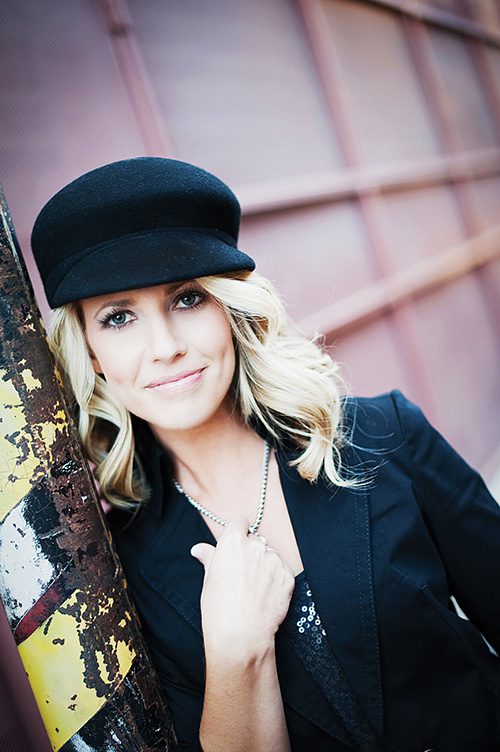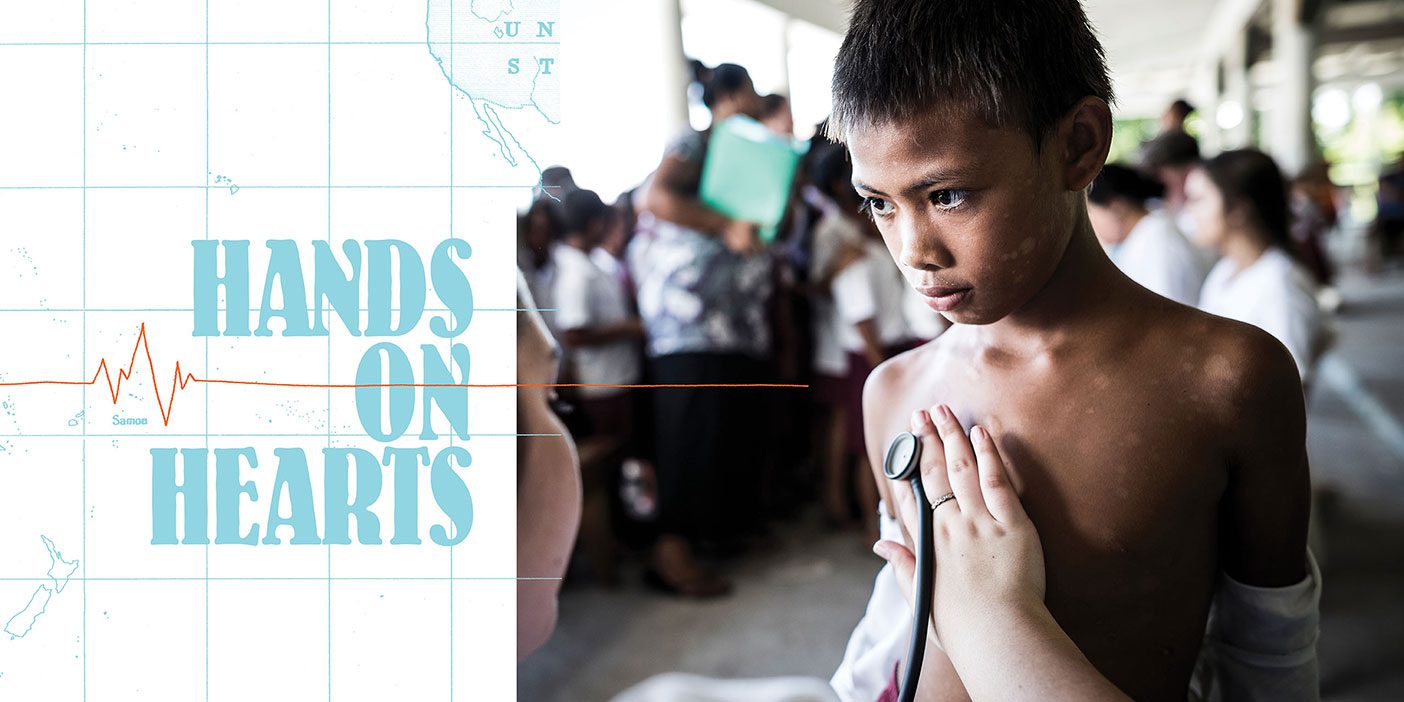By Richard Tripp II
Student plans for the Christmas respite from the rigors of higher education vary a bit at BYU. Some go home to friends and family; others visit sunny beaches and crystal clear waters; others travel to Africa to combat deadly diseases…
Deadly diseases? Yup. Instead of enjoying the comforts of the holiday season, some BYU students and voluntary doctors travel across the world to Ghana and other West African countries to combat the formidable Buruli Ulcer.
The Humanitarian Aid Relief Team (HART) includes about 15 BYU students and a handful of doctors from around the country. For the last three years during Christmas breaks, they have given up time and money to go to Africa and do what they can for the suffering people. They’ve done a lot. To date, HART has shipped close to $2 million in donated medical supplies to various communities, sent numerous doctors, and created an educational program that teaches villagers how to recognize the disease’s symptoms.
“You don’t see this sort of thing very often from college kids,” says Haven Barlow, a plastic surgeon from Maryland who has accompanied the group on two of their excursions. “They really deserve commendation. I’ve gone all over the world with several organizations, but they’ve all been run by professionals with money. This group is the only one I’ve worked with that was run by poor college students.”
HART was formed in 1992 by a few BYU students who collected and shipped medical supplies to Russia. The group’s focus eventually shifted to the Buruli Ulcer.
Ned Gardner, a graduate student in organizational behavior and the group’s current director, describes the effort as an “agenda focused on providing the people with relief and helping to find a cure for the disease.”
Considering the malady they’re up against, they’ve got their work cut out for them. The Buruli Ulcer begins as a small painless nodule under the skin–usually on the extremities. Shortly after its appearance, the nodule ulcerates. The ulcer grows as the mycobacterium travels under the skin destroying tissue. Huge, painful open sores result and sometimes cover an entire limb.
The disease typically afflicts children, and many of these children have lost entire limbs or even their lives to it. “One little boy had the ulcer on his face. The tissue around his eyes had been eaten away, and he was blinded,” says Dale LeBaron, BYU religion professor and HART advisor. “It is just a horrible disease.”

Wendy Grant, a surgeon from LDS Hospital in Salt Lake City who traveled with HART to Africa this Christmas, moves a girl via piggyback from the operating room.
Prior to HART’s intervention, treatment for the disease was fairly crude. The clinics in the region are far removed from the majority of most affected villages. Although the clinics do their best, they lack adequate staffing and supplies to deal with the disease. “One clinic was run by just two nurses trying to take care of all these diseased people. All they could do was dress the wounds and try to give some comfort, but they had no cure,” says Lebaron.
According to Lebaron, some doctors have access to crude instruments that allow them to cut away the necrotic, diseased flesh, but there isn’t much that can be done afterward beyond dressing and redressing the resultant wound. Although this treatment stops the disease, it leaves severe scarring that causes gross contractures in the limbs. Occasionally the disease is so advanced that amputation is the only remedy.
HART has responded to the ulcer with a threefold mission: immediate assistance, education, and research. To provide treatment, the students supply needed medical equipment. Most West African hospitals reuse rubber gloves and syringes for surgeries and don’t have enough gauze for bandages. HART has been vital in providing many of these supplies as well as several machines that harvest much more precise skin grafts than a scalpel. They have also recruited American doctors to perform surgeries.
Education about the ulcer is also an urgent need. Most people don’t know anything about it, and since the initial nodule is painless, they don’t seek medical attention. If, however, they can get the first nodule excised, progression of the disease is halted. During the 1996 trip, HART’s 11 BYU student volunteers accompanied nurses with Ghana’s Ministry of Health to 15 villages where there were high incidences of the disease; more than 8,000 villagers at risk were taught early recognition of the disease. Many of these villagers were screened and more than 100 people were positively diagnosed and scheduled for treatment. “That was an incredible experience I’ll never forget,” says Gardner. “We probably saved several lives, and we certainly prevented a lot of suffering.”
HART’s third effort is to increase research. Since the group began its program in West Africa, there has been little progress toward determining what causes the disease and how it can be cured. HART is now working with several doctors and researchers from Africa, Europe, and the United States who are seeking a cure.
Together they are producing a Web page that will be a central location for Buruli Ulcer research information. HART is also funding the publication of an important research study conducted by Kingsley Asiedu, a former Ghanaian medical officer now studying at Emory University in Atlanta. This study will be published in the Journal of Tropical Medicine, and HART hopes it will grab the attention of other researchers and funding sources.
“Since this disease is only afflicting impoverished people in West Africa, it hasn’t received much notice around the world. Not many people care,” says Gardner. “We’re excited to be involved with much of what’s going on with Buruli Ulcer research. In Abidjan, Ivory Coast, next year there will be the first Buruli world conference. We anticipate sending a HART representative to let them know what we’re doing. We hope to play a continuing role in the efforts to eradicate this disease.”
The group has plans to carry on and expand what has been accomplished so far, but is facing difficulties. “It’s difficult to make this all work,” says Gardner. “This organization could use full-time staffing, but we’re all full-time students.”
“Even with all the difficulties,” he says, “this is a great organization to belong to. Our people are really sacrificing for others. We’re small, we’re poor–sometimes I wonder if we’ll make it very far–but we’re ambitious. We don’t know that we can’t succeed, so we do.”









